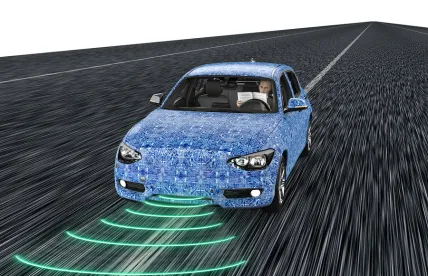Did you know that in 2018 alone, 15 states enacted legislation related to autonomous vehicles? Or that since 2012, 41 states have considered legislation related to autonomous vehicles? We are careening toward an environment where we need a database to track these laws. Thankfully, the National Conference of State Legislatures has such a database. There is no national standard. Yes, the National Highway Traffic Safety Administration (NHTSA) released A Vision for Safety 2.0, the latest guidance for automated driving systems to industry and the states. Guidance is helpful, but it is not law.
Remember the interstate highway system that we have? We drive our vehicles between states. Sometimes, multiple states in one trip. Certainly, to states that border our state. Absent a national standard, our autonomous vehicle is going to have to comply with the laws of all 50 states simultaneously. Few things will cause a client’s eyes to glaze over faster than hearing their lawyer say “you need a 50 state survey of the law”, but that is where things are headed.
Take a simple difference. Waymo just urged NHTSA to remove the barriers that require steering wheels and brake pedals in vehicles. Illinois could pass legislation doing just that. But if Wisconsin does not, when I drive my brand new Waymo vehicle (or, I suppose it drives me) without a steering wheel or brake pedal over the border from Illinois to Wisconsin, I instantly go from law-abiding to law-breaking. The patchwork of laws in 50 states for a product – vehicles – that inherently move between states impairs the industry’s ability to develop and deploy autonomous vehicles because designing for the laws of 50 states is not only difficult but cost-prohibitive.
But the legislative/regulatory issue is only the tip of the iceberg. The country is littered with odd driving laws and regulations. For example, in Oxford, Mississippi, it is illegal to honk your horn. In Arizona, it is against the law to drive in reverse on a public road. While these are obviously somewhat silly examples, they drive home the point of how wacky local rules of the road can be. There is almost an endless stream of possible rules of the road related involving commercial vehicles, pedestrians, crosswalks, and more. These exist at the state, county or even municipal level.
These challenges not only impact development and deployment, but they also call into question just how quickly autonomous vehicles can rule the road as most expect them to. Human drivers use their intuition to adapt to these local road rules. If a person fails to adapt, they are most likely simply going to get a minor ticket. Though this raises another more questions: if an autonomous vehicle violates a rule of the road, can it be pulled over and ticketed? Who pays the ticket? Now we just added another layer of rules and regulations for autonomous vehicles to know at every level of government: how to act when those flashing lights and sirens appear behind the vehicle. Plus, it is likely not realistic to expect national standards for rules of the road to the level of minutia at which autonomous vehicles will have to operate. The long and short of it is: if autonomous vehicles want to replace human drivers, they will have to learn all these laws as well as people do – hopefully even better.




 />i
/>i

